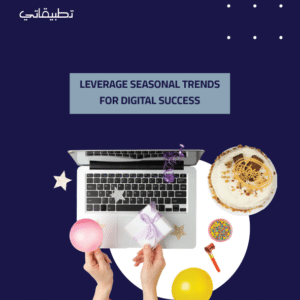In today’s fast-paced digital world, customers are overwhelmed with choices. Generic marketing messages just don’t cut it anymore. If you really want to capture your audience’s attention and convert casual browsers into loyal buyers, personalized marketing is the game-changer you need.
But what exactly is personalized marketing, and why does it work so well?
What is Personalized Marketing?
Personalized marketing is a strategy that tailors marketing messages and offers to individual customers based on their behaviors, preferences, and past interactions. Instead of sending out a one-size-fits-all message, you deliver something uniquely relevant to each person.
Think about it—when a brand offers you something that feels tailored just for you, it resonates more. This is because the message feels personal, valuable, and timely. That’s the secret to increasing customer engagement and loyalty.
Why Does Personalized Marketing Matter?
- Increased Customer Engagement: When you speak directly to a customer’s needs and preferences, they are more likely to engage with your content. Generic ads may get ignored, but personalized messages stand out.
- Better Conversion Rates: Studies show that personalized marketing can lead to higher conversion rates. When customers feel like a brand understands their needs, they are more likely to make a purchase. According to a report by Epsilon, 80% of consumers are more likely to buy from a brand that offers personalized experiences.
- Enhanced Customer Loyalty: Personalization creates a connection between the brand and the customer. When customers feel valued and understood, they are more likely to stay loyal to the brand, making repeat purchases and spreading positive word-of-mouth.
- More Efficient Use of Marketing Budget: Personalized marketing helps you target the right people with the right message. This reduces waste in your marketing budget by ensuring that you’re not spending money on audiences that are unlikely to convert.
How Can You Implement Personalized Marketing?
Personalized marketing may sound complex, but with the right tools and approach, it becomes a powerful strategy. Here are some steps to get started:
- Collect and Analyze Data: Use data to understand your customers better. Tools like Google Analytics, CRM platforms, and customer surveys can help you gather insights into their behaviors, preferences, and pain points. Use this data to segment your audience into different groups based on common characteristics.
- Tailor Your Content: Once you have segmented your audience, create personalized content for each group. For example, if you run an e-commerce store, you could send tailored product recommendations based on a customer’s past purchases or browsing history. You can also personalize email campaigns by addressing customers by name and offering them relevant content.
- Leverage Automation: Marketing automation tools like HubSpot, Marketo, or ActiveCampaign allow you to automate personalized content at scale. Whether it’s personalized email campaigns, product recommendations, or targeted social media adsg, automation makes it easy to deliver the right message to the right person at the right time.
- Measure and Optimize: Personalization is an ongoing process. Continuously track the performance of your personalized campaigns using analytics tools. Keep an eye on key metrics like open rates, click-through rates, and conversion rates, and adjust your strategy as needed to improve results over time.
Examples of Successful Personalized Marketing
Here are some real-world examples of how brands have successfully implemented personalized marketing:
- Amazon: Perhaps the most famous example, Amazon’s personalized recommendations are powered by their customers’ browsing and purchase histories. The “Customers Who Bought This Also Bought” feature is a powerful example of how data-driven personalization can increase sales.
- Netflix: Netflix uses a sophisticated algorithm to recommend shows and movies based on your viewing history. This personalized approach keeps users engaged on the platform for longer, reducing churn rates and increasing loyalty.
- Spotify: Spotify’s “Discover Weekly” playlist is a personalized selection of songs based on your listening habits. By delivering content that matches the user’s personal taste, Spotify keeps listeners coming back every week.
The Future of Personalized Marketing
The future of personalized marketing looks even brighter as technology continues to advance. With the rise of artificial intelligence (AI) and machine learning, brands will be able to deliver hyper-personalized experiences at a larger scale than ever before. Imagine a world where every touchpoint, from website visits to in-store shopping, is personalized in real time. That’s the future we’re heading towards.
Finaly
If you’re not using personalized marketing in your strategy, you’re missing out on one of the most powerful tools for driving engagement, conversions, and customer loyalty. In a digital age where consumers expect tailored experiences, personalized marketing is no longer a luxury—it’s a necessity.
Start small by analyzing your customer data and segmenting your audience. From there, you can begin to craft personalized experiences that turn your browsers into buyers, and ultimately, into loyal brand advocates.



